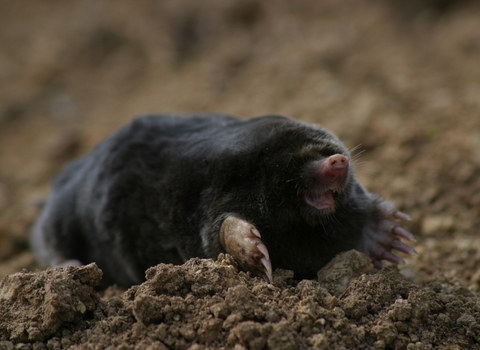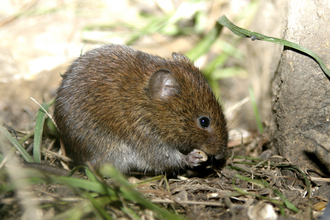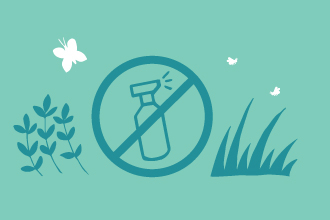
©Steve Bottom
Mole
This stocky, brown mammal spends its life burrowing underground with its spade-like paws, hunting for earthworms to eat.
Scientific name
Talpa europaeaWhen to see
January to DecemberSpecies information
About
Moles are very rarely seen as they spend most of their lives underground. They are stocky animals, with a wedge-shaped body and short tail. They use their spade-like paws to dig tunnels and hunt for their favourite meal of earthworms. They also like to eat underground grubs that would usually feed off crops, so moles can help to control unwanted visitors!By digging up the earth, moles help make the soil healthier by aerating it. This allows more types of plants to grow, which in turn feed more insects. Not only this, their tunnels improve soil drainage, which helps stop flooding and huge puddles forming on the ground. Moles truly are the unsung heroes of the animal world!
How to identify
The mole is unmistakable. It is a stocky little animal, covered in black, velvety fur, with tiny eyes, a long, pink nose and two big, shovel-like 'hands' for front paws. You're more likely to spot mole hills (the piled-up earth from their burrowing) than the moles themselves.Distribution
Widespread, but absent from the Isles of Scilly, most Scottish islands, the Isle of Man and Northern Ireland.Did you know?
A mole can dig up to 20 metres of tunnel in a day using its spade-like forepaws to effectively breaststroke its way through the soil. Every now and again, loose soil is pushed up to the surface, resulting in what we see as a mole hill.The mole's velvety coat helps it to move easily through the soil, and its mouth and nose are protected from debris by their down-facing position.
How people can help
Tarmacking and increasing numbers of hard surfaced gardens mean that moles are being pushed out of their natural habitats. Why not help green up the grey by making your garden a home for wildlife.


